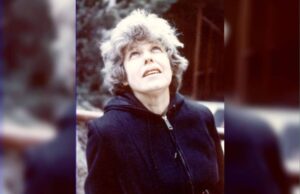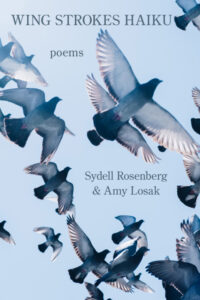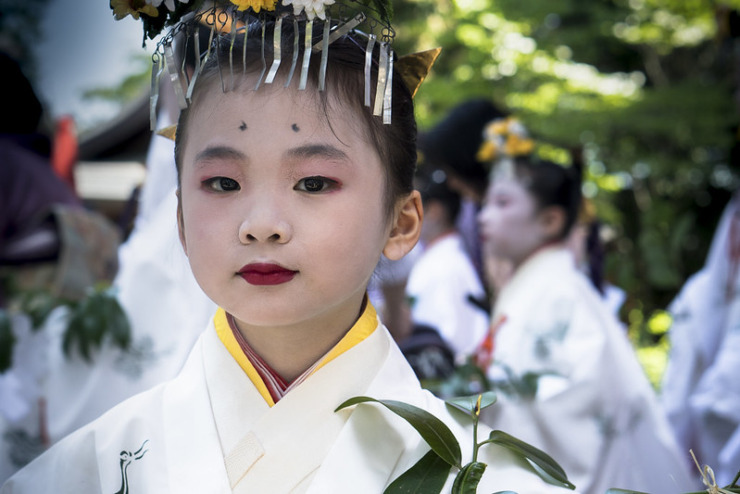Amy Losak publishes her haiku poems — and her mother’s
Sometimes, the backstory can be important, especially in poetry.
In 1968, Sydell Rosenberg was one of the charter members of the Haiku Society of America, designed to promote the writing and appreciation of haiku in English. The haiku form of poetry emerged in 17th century Japan, and its basic element is three lines arranged in 17 sound units in Japanese, or 5, 7, and 5 syllables, respectively, in English. It was originally called a hokku; the term “haiku” wasn’t used until the 19th century. And the theme of the haiku — about one of the seasons — had to be strictly observed. The poet with whom haiku is most closely associated is Basho (1644-1694).

Sydell Rosenberg
Rosenberg was an active member of the Haiku Society of America, which sponsors annual competitions for haiku, renku, senryu, and haibun forms of poetry. It holds an annual conference and publishes the literary journal Frogpond.
The simplicity of its structure suggests writing a haiku is easy. Simplicity in writing, however, and especially writing a poetry form like haiku, is demanding. (Try writing one.)
Sydell Rosenberg wrote haiku poems for most of her life. She died in 1996. Her work was published in journals, anthologies, and handbooks, and it was featured in a 1994 New York public arts project, “Haiku on 42nd Street,” in which old theater marquees became frames for haiku poems. And Rosenberg inspired her daughter, Amy Losak, to write haiku poetry as well.

Amy Losak
In 2018, under her mother’s name, Losak published H is For Haiku: A Treasury of Haiku from A to Z. Illustrated by Sawsan Chalabi, it is a collection of haiku poetry for children but suitable for adults as well. Losak wrote the introduction. The book was named by the National Council of Teachers of English as a 2019 “Notable Poetry Book.”
Now Losak has published Wing Strokes Haiku, a joint project with her mother’s poetry. Most pages of the 36-page chapbook contains a haiku poem by Rosenberg and one by Losak; a few contain two poems by Losak alone. The collection is a celebration of the haiku form, but it’s also a way for the daughter to remember and honor her mother. And it’s a pure delight to read.
neighbor’s yard
three brown butterflies
braid the air – AL
after the downpour
squawks of a blue jay
heavy on a branch – SR
The poems are about nature and its denizens — birds, butterflies, cats, spiders, rain, weather, seasons, trees, moths, beetles, forsythia, and more. Each haiku is a small gem, evoking an immediate visual response.

two tree trunks tied together
by a spider’s web -SR
Losak works as a healthcare media relations consultant, having worked with numerous hospitals, medical centers, medical organizations, foundations, and pharmaceutical companies. Her poems have been published in numerous literary publications and included in several anthologies. She is also a member of the Haiku Society of America, has been published in the journal Frogpond, and won first place in a Haiku Society of America contest in 2021. She lives in New Jersey.
The poems of Wing Strokes Haiku are about the small moments in our lives, the ones where we notice a hummingbird outside the window, a breeze seeping through the trees, or a butterfly finding a flower. It’s a lovely collection, and it’s a lovely tribute to a mother.
Related:
How Haiku Is Helping Me Be a Better PR Pro by Amy Losak
Photo by Marc Veraart, Creative Commons, via Flickr. Post by Glynn Young.
How to Read a Poem uses images like the mouse, the hive, the switch (from the Billy Collins poem)—to guide readers into new ways of understanding poems. Anthology included.
“I require all our incoming poetry students—in the MFA I direct—to buy and read this book.”
—Jeanetta Calhoun Mish
- Poets and Poems: Christine Rhein and “Wild Flight” - October 16, 2025
- Poets and Poems: Peter Murphy and “You Too Were Once on Fire” - October 14, 2025
- “Your Accent! You Can’t Be from New Orleans!” - October 9, 2025


Leave a Reply